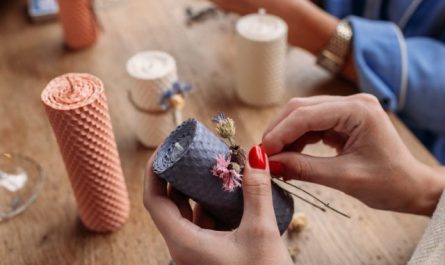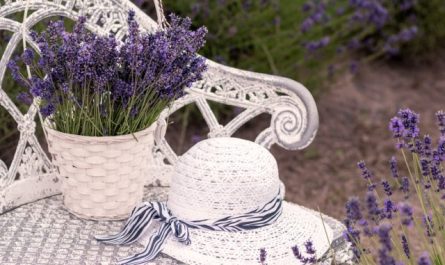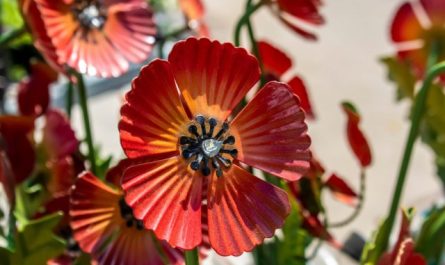Are you missing master classes? Then quickly clear your workspace and prepare your materials. Today we will make a dream catcher – an Indian amulet that protects from evil spirits and diseases in sleep. The web on it should catch evil spirits and protect its owner. Good dreams seep through the feathers and reach the sleeping person.

Why is it worth making a dreamcatcher yourself, and not buying from craftsmen? Firstly, you yourself are a first-class craftsman! Making a dreamcatcher is a fascinating and not difficult process, the main thing is to understand how to weave a “web”.
Secondly, you will be able to make it the way you think of it, rather than choosing a more or less liked option. You try on the role of a creator and create a unique dreamcatcher yourself.
And thirdly, if you want not only a beautiful interior decoration, but also a practical use of this amulet, then a dream catcher made by yourself will work better.

You will need:
- Embroidery hoop (inner circle).
- Mouline threads (it is better to take different colors for the base and web, but you can do it in one).
- Feathers (I have decorative goose feathers).
- Beads, preferably made from natural stones (for variety, take different beads).
You can add various decorations, I found these silver pendants at home. You can use, for example, decorative butterflies, rhinestones, bells, glass beads, etc. Anything that your imagination can come up with.
For the base, you can use branches, as the Indians did, who hardly had hoops, but here we will make the most convenient and simple option. If you wish, you can change and add some materials.
Step №1
Prepare the hoop and threads. Mine are 26 cm in diameter, I needed 3,5 skeins of thread, 8 meters each. Tie a knot around the base and begin to tightly weave in a circle.

Threads can tangle around the base and create difficulties, tie into knots and slow down the process. The easiest and fastest way is to first make several skeins around the base next to each other, and then move them tightly. This way you will get even rows and will not get tired of watching the thread.

When the first skein of threads is finished, tie the thread into a double knot, but do not rush to cut off the tail. It is better to tie it with a new thread, and then cut off the excess.

When you finish braiding the base, tie the thread and cut off the excess. Some “joints” from the knots may be visible, but later we can cover them with cobwebs.
Step №2
We can make a web by eye, or in equal sections. I will show you the exact method so that you have something to rely on, but you can take it easier and do it without calculations, in approximately equal parts. For convenience, take a thread of a different color, scissors, a ruler, a marker or a pencil.

We wrap our base with a thread and cut off this length. Now we can measure how long our base is
I got 78 centimeters for a base 26 in diameter, you will have your own numbers. I wanted to make more loops and make 12 knots, for this we divide our length by the number of segments 78:12=6,5.

On our measuring thread we make a mark with a marker at this distance, so that it is easier to navigate on the base. Or you can make notches with a pencil on the base itself, but my threads are white and I did not want to draw on it.

Next, take a thread of a different color, I have two types of green, I will alternate them on each row. When you weave from two different colors, it is easier for you to distinguish the necessary segments for knots, so I recommend using several colors.
We tie a knot on the base and use a measuring thread to determine the place for the next “hook”. On the first row, we no longer need to tie a knot. We push the thread behind the base as shown in the photo.

Next, we push the end of the thread into the resulting loop. The thread wrap should be tight and hold well on the base, not move or slide. Let’s look at the example of another hold to see how everything should turn out. Compare your version and the one shown in the photo.



If everything went right, then continue making such hooks all over the base until you return to the first knot. Secure the thread there and cut off the excess. If you did everything right, it should look like this: not very pretty yet. But this is our first row, to which the second will be attached, and the third to it, and so on.

Step №3
Take a thread of a different color and tie a knot in the middle of one of the “sections” of the thread. Cut the end on one side, and pull the thread itself to the adjacent section and also tie a knot in the middle.

We do this in a circle, tying knots on each segment. The thread should be slightly taut so that the previous row is pulled back nicely and as a result we get beautiful triangles. When you finish the row, tie the thread on the same segment you started with. You should get something like this.

Continue making rows in the same pattern, there should be as many knots as you initially chose to make segments. If I divided the circle into 12 parts, I will always have 12 knots, if there were, for example, 8 segments, there would always be 8 knots. If you are making a third row, then weave it only with the second, you don’t need to touch the first one.
Step №4
Once you have figured out how to make a web and you are good at it, you can decorate it with beads. If you are not interested in this, skip this step.
I have fluorite beads, the color of this stone varies from dark purple to azure green, which fits well with the color scheme of my dreamcatcher.
To simplify the work, thread the needle and thread the bead. Then everything is done according to the classics – tie a knot on the previous row.

We tie a knot on the next section and get a part with a bead, which will not go anywhere from there, and only after that can we put the next bead on the needle.
Continue each section in this manner and you will get an unusual row with beads that personally remind me of dew drops. Instead of fluorite, you can use wooden beads, seed beads, bugles or unprocessed beads.

Step №5
When to stop in rows – only you decide. For example, here the segments became too small, and it became inconvenient for me to weave. It turned out to be 8 rows. So that it would not be too empty in the middle – I added a pendant in the shape of a heart on a thread.

Step №6
Let’s start making pendants to the base. I have unprocessed amethyst and chrysolite beads, goose feathers and various pendants prepared for this. If the holes in the beads or pendants are too small, use regular threads together with the floss; if you are worried that they won’t hold up or you have a lot of heavy elements, weave with two threads.

I have prepared feathers of different sizes and colors. Large white ones are more airy and go well with large bases (diameter 20-30), small ones look good on smaller bases, for example 15 cm. There is no difference in fastening.
So, thread the needle and string beads and pendants on it in the desired order. I want to mix two types of beads and make them chaotic and add one pendant to each such thread with filling. You can not use beads at all, make only feathers. You can add more than one feather to one thread, listen to yourself and your imagination.

My threads turn out like this, I leave a 10-15 cm tip, wrap it around the tail of the feather (this is called the quill) several times and secure it with a double knot. One thread is ready. On the opposite side from the feather, we leave a thread reserve to tie it to the base.
We make 4-6 such threads, when everything is ready we try them on and hang them on the bottom of our base. For convenience, you can temporarily hang the future dreamcatcher on the door handle to try on the threads and find the center of the base.

In order to visually dilute the fairly full threads, and of course to add more feathers, we make about the same number of empty threads with feathers at the end. It is recommended to attach them at different heights.
Step №7
Well, we have finished our dreamcatcher, all that remains is to hang it over the bed. I will show you a simple way to make a loop. Take a small piece of thread and connect it, tie the ends in a double knot. Place it on top of the base where the loop should be.

Next, we pass the lower edge of the rope under the base and bring it out to the other end of the loop. We pull the upper edge and move the lower edge of the rope to one point, getting our self-tightening loop.

That’s it, the most unusual and original dream catcher is ready. All that’s left is to hang it by the loop. It is recommended to hang it above the bed, and not just on the wall. Sweet dreams and see you soon at our “Crazy Hands” circle.







